River Regulation Decreases Genetic Health of a Sensitive Frog, Rana boylii
Ryan Peek
PhD Candidate, Ecology
2018/01/11 11:25am

1 / 30
Acknowledgements
Mike Miller & Sean O'Rourke
Center for Watershed Sciences
Brad Shaffer
Amy Lind
Corey Luna, many field helpers, SYRCL, Sierra Streams Institute
2 / 30
"The face of the water, in time, became a wonderful book--a book that was a dead language to the uneducated passenger, but which told its mind to me without reserve… And it was not a book to be read once and thrown aside, for it had a new story to tell every day” (Mark Twain, Two Views of the Mississippi, 1883)
3 / 30
The abridged history of Sierra Nevada Rivers
4 / 30
The abridged history of Sierra Nevada Rivers
Rivers flow largely uninterrupted for 20,000+ years
4 / 30
The abridged history of Sierra Nevada Rivers
Rivers flow largely uninterrupted for 20,000+ years
Hydraulic Mining begins in 1853, banned in 1884.
4 / 30
The abridged history of Sierra Nevada Rivers
Rivers flow largely uninterrupted for 20,000+ years
Hydraulic Mining begins in 1853, banned in 1884.
Regulation via dams/diversion/hydropower (1930's-today)
4 / 30
CA Anthropogenic Legacy: Mining
5 / 30
CA Dammed Rivers
6 / 30
Hydroelectric power generation comprises over half of all renewable energy generation in California (California Energy Commission 2010
Majority (84%) of dams are for: 47% Irrigation (n=709) 23% Water supply (n=342) 14% Hydroelectric (n=207)
CA Dammed Rivers
Over 1,400 large dams (NID 2007)
Residential energy demands expected to increase by 24% by 2035 (US EIA 2010)
6 / 30
Hydroelectric power generation comprises over half of all renewable energy generation in California (California Energy Commission 2010
Majority (84%) of dams are for: 47% Irrigation (n=709) 23% Water supply (n=342) 14% Hydroelectric (n=207)
Unreg. flow patterns, high seasonality & predictability
7 / 30
Reg. flow patterns limit connectivity, disrupt predictability
8 / 30
Small populations with limited connectivity may have reduced adaptive potential, or genetic health
9 / 30
Foothill yellow-legged frogs (Rana boylii)
10 / 30
Foothill yellow-legged frogs (Rana boylii)
Obligate river breeding frog, uses wide range of habitat, but has disappeared from over 50% of historical range
Being evaluated as candidate for state and federal listing under ESA
10 / 30
Foothill yellow-legged frogs (Rana boylii)
Obligate river breeding frog, uses wide range of habitat, but has disappeared from over 50% of historical range
Being evaluated as candidate for state and federal listing under ESA
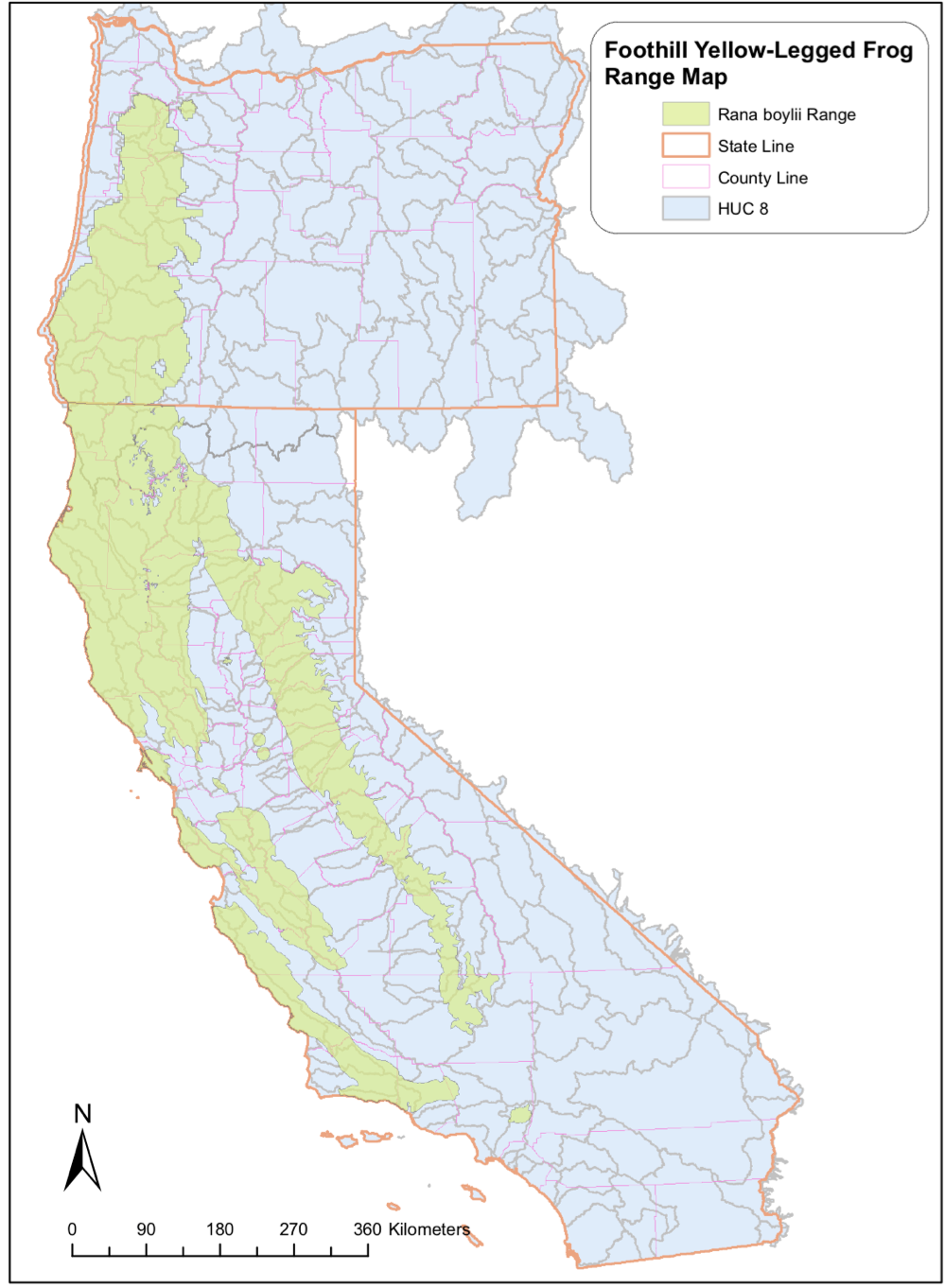
10 / 30
FYLF make excellent hydrologic indicators
11 / 30
FYLF make excellent hydrologic indicators
R. boylii strongly linked with local hydrology, and thus the hydrologic history
11 / 30
FYLF make excellent hydrologic indicators
R. boylii strongly linked with local hydrology, and thus the hydrologic history
Spawning timing & habitat selection is tied to receding flow cues & increasing water temperatures
11 / 30
90% of eggs observed in Sierras were in shallow, sheltered waters (n=147) (Bondi et al. 2013)
- < 0.67 m total depth
- < 0.15 m/s velocity
Study
Has river (flow) regulation caused genetic fragmentation in R. boylii?
Can we quantify this genetic signature for specific hydrologic flow regimes?
12 / 30
Study
Has river (flow) regulation caused genetic fragmentation in R. boylii?
Can we quantify this genetic signature for specific hydrologic flow regimes?
Use genome-wide methods RADSeq/RAPTURE (Ali et al. 2016)
12 / 30
Study Area
13 / 30
Study Area: American Watershed
14 / 30
Hydrographs: Unimpaired
15 / 30
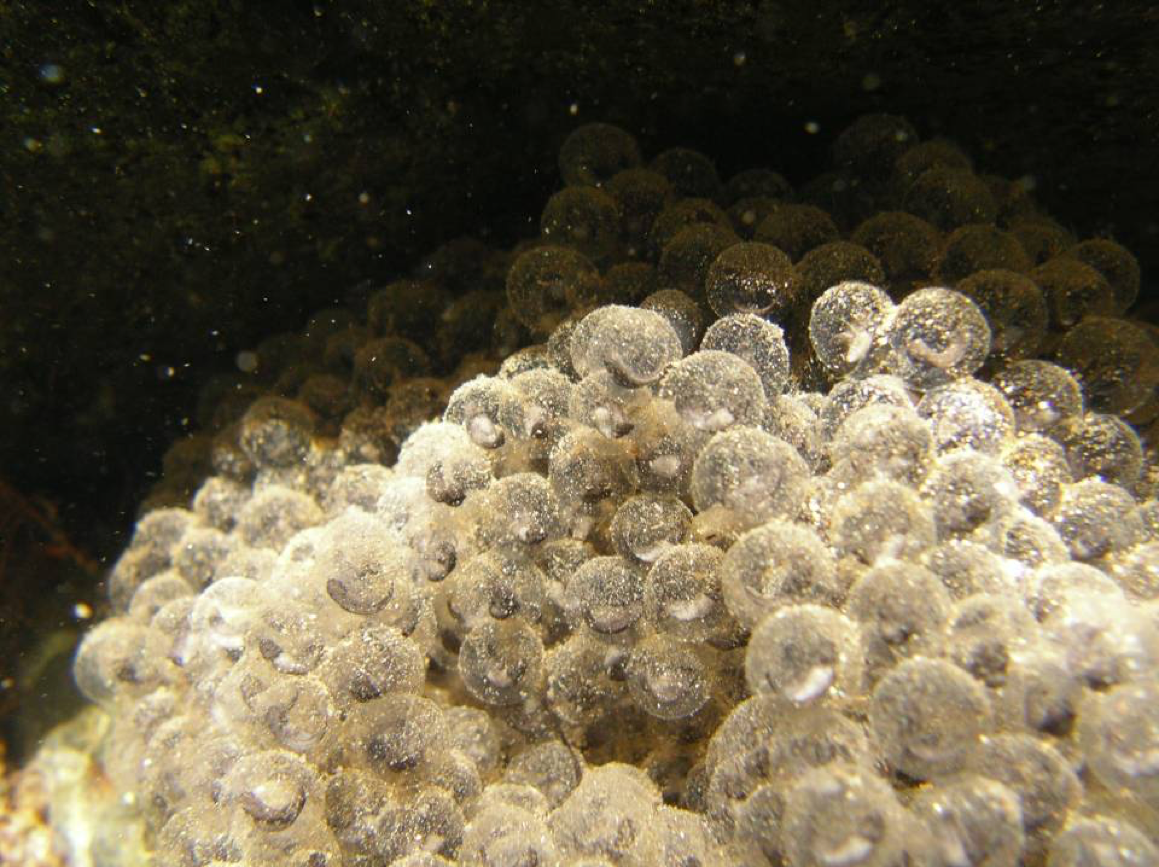
Hydrographs: Unimpaired
16 / 30
Hydrographs: Impaired (Hydropeaking)
17 / 30
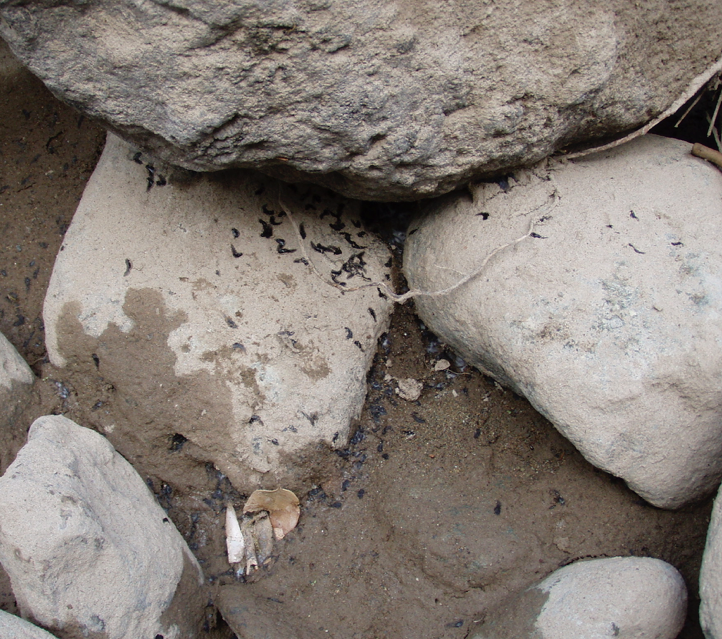
Hydrographs: Impaired (Hydropeaking)
18 / 30
RESULTS: Anomolous genetic pattern in highly regulated MF American watershed
19 / 30
PCA: Sierra Nevada
20 / 30
Why does structure matter? Indicates loss of variation, potential limited connectivity, small population sizes, isolation, divergence, etc.
PCA: Unimpaired NF American
21 / 30
PCA: Impaired (hydropeaking) MF American
22 / 30
Assessing Population Connectivity using FST (Wright 1950):
a measure of population differentiation due to genetic structure
Scaled 0=(panmixis) to 1=(completely different)
23 / 30
FST vs. River Distance
24 / 30
Evidence of Bottlenecks/Limited Genetic Variation for Impaired Flow Types
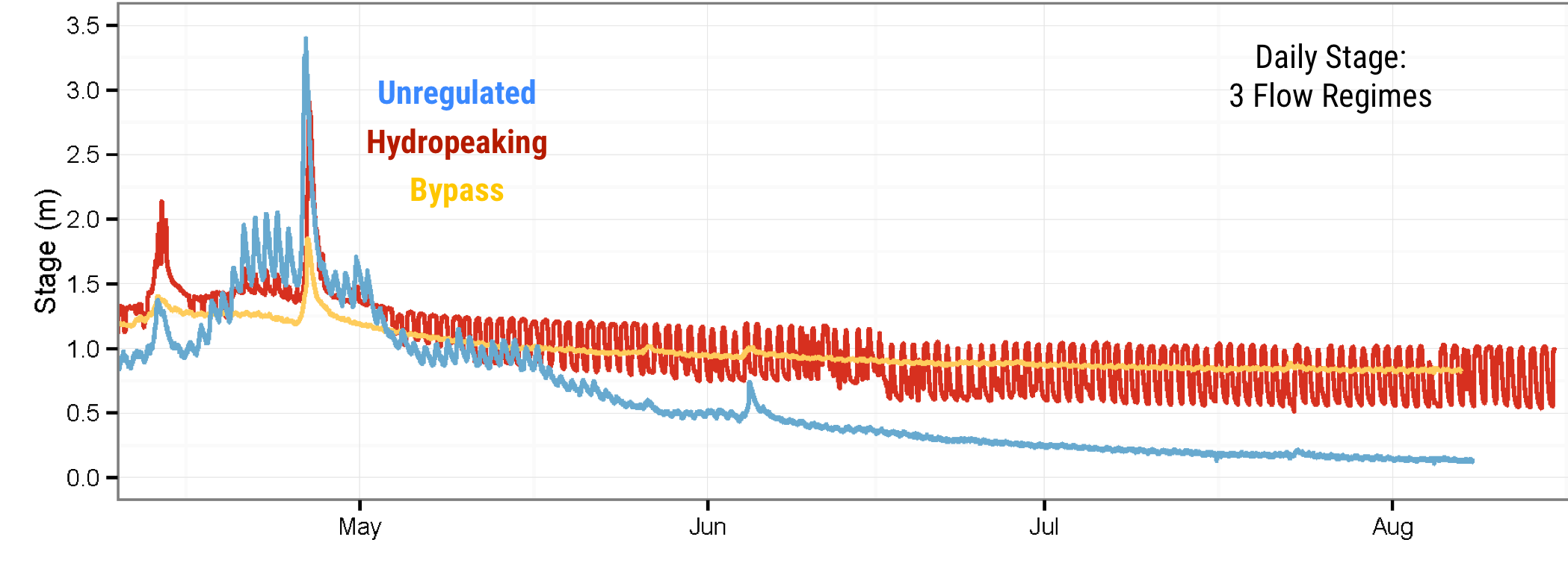
25 / 30
Loss of genetic diversity in regulated systems >> unregulated
26 / 30
River regulation is the strongest predictor of population isolation, NOT distance!
27 / 30
Boosted Regression Tree Models
28 / 30
Summary:
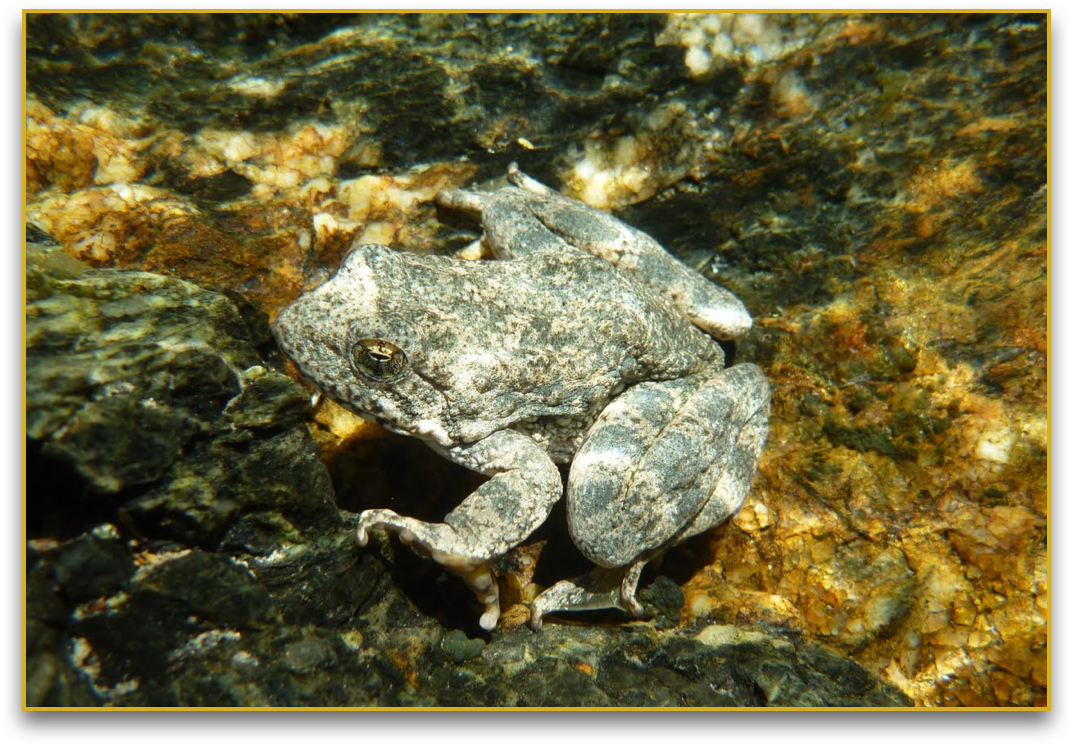
Flow alteration is having a direct impact on a hydrologically sensitive species at a genomic level
29 / 30
Summary:

Flow alteration is having a direct impact on a hydrologically sensitive species at a genomic level
The current population trajectory is highly concerning in Sierras
29 / 30
Summary:

Flow alteration is having a direct impact on a hydrologically sensitive species at a genomic level
The current population trajectory is highly concerning in Sierras
Flow management and listing distinct population segments may afford some protection...
29 / 30
Summary:

Flow alteration is having a direct impact on a hydrologically sensitive species at a genomic level
The current population trajectory is highly concerning in Sierras
Flow management and listing distinct population segments may afford some protection...
RAPTURE/RADSeq is a powerful & effective method
29 / 30
Thank you!
Slides : ryanpeek.github.io/presentations
30 / 30